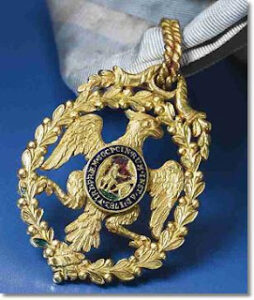
Following is a recount of French-American Cultural Foundation President Debra Dunn’s visit to Chateau de la Grange-Bléneau, known to most simply as “La Grange.”
As I journey back to Paris, the memories of my visit to La Grange fill my mind with wonder and awe. It’s difficult to capture the profound impact of the experience in mere words, but I’ll do my best to share the highlights of this extraordinary day.
Situated approximately 30 miles from Paris, the chateau dates to the 14th century, but its most famous resident was Marquis de Lafayette from 1799 until his death in 1834.
Vincent Bouat-Ferlier is the Director of the Josée and René de Chambrun Foundation, a French charitable organization dedicated to preserving La Grange. The French-American Cultural Foundation has developed a great relationship with Vincent over the years, starting when he was at Musée national de la Marine, and he ensured my visit to La Grange was magnificent.
The treasures I encountered were beyond anything I had imagined. Among the most remarkable were Lafayette’s handwritten edits of the French Bill of Rights, a testament to his pivotal role in history. I was also moved by the sight of his most personal possessions, lovingly preserved on his bedside table. Adrianne’s bedroom, including the bed where she passed away, offered a deeply personal glimpse into their lives.

One of the most poignant artifacts was the American flag given to Lafayette during his farewell tour, which he cherished and carried in his wallet until his death. There was also the false passport Adrianne intended to use with her children for a planned journey to Boston, which ultimately led her to join Lafayette in prison. The Order of the Cincinnati, bestowed upon Lafayette by George Washington, was another highlight, symbolizing the deep bond between these two great men.
The attic space where the Lafayette Archives were discovered was particularly fascinating. The archives remained hidden until the Chambrun family took over the property in the late 1950s and early 1960s, adding another layer of intrigue to the visit.
I was surprised and intrigued by the amount of British and Irish documents, furnishings, sculptures, and art, reflecting the non-French marriages within the Lafayette family. This eclectic mix added a unique dimension to the collection, showcasing the diverse influences on the family’s history.
What made the experience truly unique was the personal and tangible connection to history. Unlike typical museum exhibits, many of these treasures were not behind glass. Being able to touch these historical artifacts brought the past to life in a way that is rarely possible. The family hopes to build a museum on the chateau property to preserve these items safely while providing context for visitors, a project that I wholeheartedly support.
The day concluded beautifully with cake and tea in Lafayette’s dining room, a perfect ending to an unforgettable visit. This visit to La Grange is a memory I will cherish forever, a day that allowed me to connect with history in the most personal and profound way.
